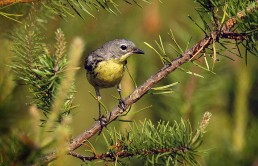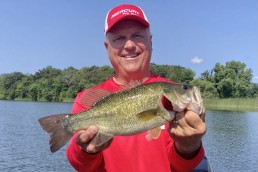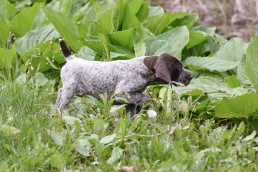Kirtland’s warbler may come off threatened-endangered list
SHARE THIS POST
The Michigan Department of Natural Resources yesterday applauded the decision by the U.S. Fish and Wildlife Service to potentially remove the Kirtland’s warbler from the federal list of threatened and endangered species. The proposed delisting now enters a 90-day public comment period. A final decision is expected within a year.
“This is a great day for conservation and for Michigan,” said DNR Director Keith Creagh. “This decision recognizes over 50 years of dedication and commitment to Kirtland’s warbler conservation by many agencies, organizations, industries, and individuals in our state and beyond. Together we have been able to benefit local economies while at the same time providing necessary nesting grounds for this species. The decision by our federal partners marks a significant wildlife success story.
Forty years ago, the Kirtland’s warbler was on the brink of extinction. Today, the yellow-breasted songbird, which lives in northern Michigan’s jack pine forests, has made a comeback. The bird rebounded from a population low of about 350 in 1987 to more than 4,000 today. The Kirtland’s warbler population continues to grow and has for the past 16 years exceeded population recovery goals. Once thought confined to northern Michigan, the bird species has since been found in Wisconsin and Canada.
“Kirtland’s warblers were one of America’s rarest birds, but today they represent the power of partnership to recover imperiled wildlife,” said Tom Melius, Midwest Regional Director for the U.S. Fish and Wildlife Service.
The Kirtland’s warbler was among the first animals to gain federal protection in 1967 under the Endangered Species Preservation Act, a precursor to the Endangered Species Act. The species started to rebound once agencies and their partners began to implement long-term efforts to conserve young jack pine. Large areas of jack pine of a certain age class are essential for Kirtland’s warbler nesting. Also essential to a thriving Kirtland’s warbler population is control of brown-headed cowbirds. The brown-headed cowbird is a nest parasite that knocks eggs out of Kirtland’s warbler nests and replaces them with its own.
Are you enjoying this post?
You can be among the first to get the latest info on where to go, what to use and how to use it!
The Kirtland’s Warbler Breeding Range Conservation Plan was developed in 2015 by the Michigan DNR, the U.S. Fish and Wildlife Service and the U.S. Forest Service. The plan is now the guiding management strategy for the species. Additionally, funding and other commitments to habitat management and cowbird control are in place to ensure continuation of conservation actions in the absence of Endangered Species Act protections.
The U.S. Fish and Wildlife Service will receive comments on the proposed delisting through July 11, 2018.
To submit comments electronically visit www.regulations.gov and enter FWS–R3–ES–2018–0005 in the search box. To submit a hard copy, submit by U.S. mail or hand-delivery to: Public Comments Processing, Attn: FWS–R3–ES–2018–0005, U.S. Fish and Wildlife Service, MS: BPHC; 5275 Leesburg Pike, Falls Church, VA 22041–3803.
More information about the Kirtland’s warbler and the proposal to remove Endangered Species Act protections is available at: https://www.fws.gov/midwest/endangered/birds/Kirtland/index.html.
MWO
SHARE THIS POST
Did you enjoy this post?
You can be among the first to get the latest info on where to go, what to use and how to use it!



